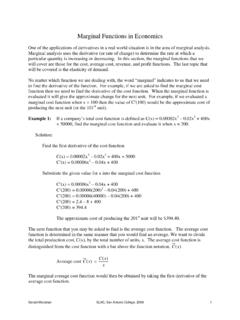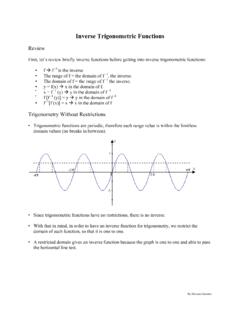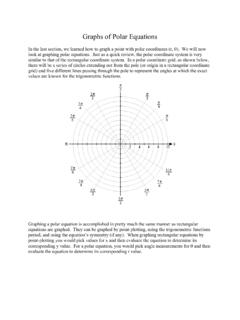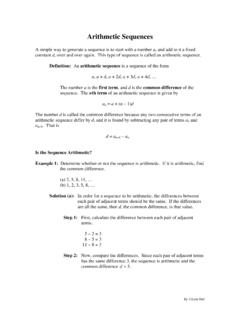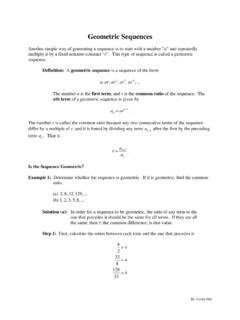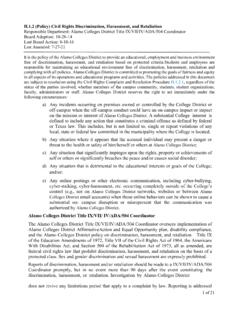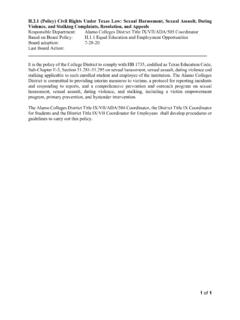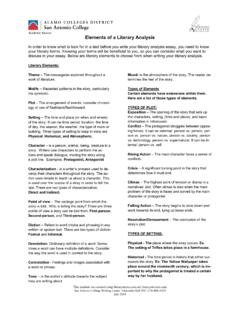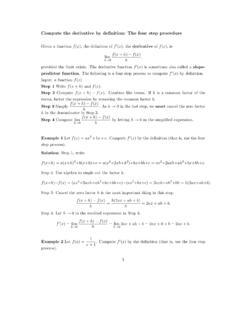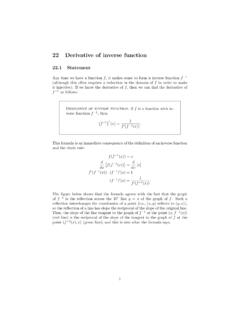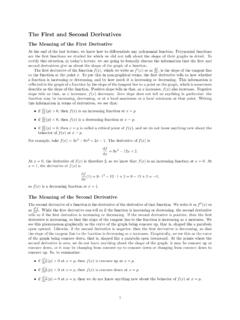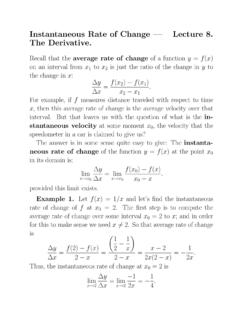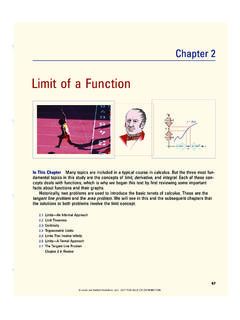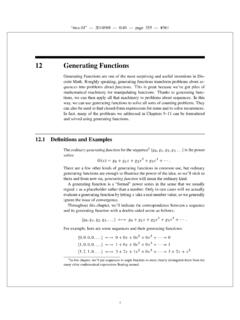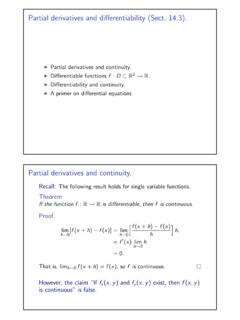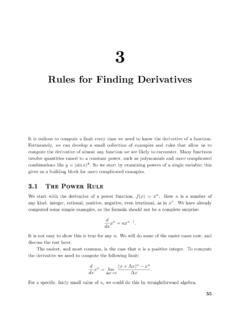Transcription of Differentiation of Exponential Functions
1 Differentiation of Exponential Functions The next derivative rules that you will learn involve Exponential Functions . An Exponential function is a function in the form of a constant raised to a variable power. The variable power can be something as simple as x or a more complex function such as x2 3x + 5 . Basic Exponential Function xyb=, where b > 0 and not equal to 1 Exponential Function with a function as an exponent ()gxyb= The derivative of an Exponential function would be determined by the use of the chain rule, which was covered in the previous section. In reviewing the derivative rules for Exponential Functions we will begin by looking at the derivative of a function with the constant raised to a simple variable.
2 Derivative of an Exponential function in the form of xyb= If xyb= where b > 0 and not equal to 1 then the derivative is equal to the original Exponential function multiplied by the natural log of the base. ()lnxyb =b Example 1: Find the derivative of 5xy=. Solution: Since you have a constant raised to the variable x, the derivative would be equal to the original function multiplied by the natural log of the base, which is 5. ()5ln 5 5xxyy= = This derivative rule can be simplified when the base of the Exponential function is equal to e . The derivative involves the natural log of the base. However, if the base is equal to e then the Gerald ManahanSLAC, San Antonio College, 20081natural log of the base can be reduced to the value of 1.
3 (See our logarithms formula sheet for a full list of logarithm properties.) This would simplify the derivative to the original function itself. ()()ln1xxxxyeyeeee= === Derivative of an Exponential function in the form of xye= If xye= then the derivative is simply equal to the original function of xe. Example 2: Find the derivative of uye=. Solution: Since the base of the Exponential function is equal to e the derivative would be equal to the original function. uuyeye= = Now lets say you are given the function ()gxyb= and are asked to find its derivative. In this case, you will need to use the chain rule to determine the derivative.
4 To see how the chain rule would be used we will rewrite this function as the composition of the Functions f(u) and g(x). We will begin by letting u equal the exponent of g(x) ()()gxuugxybyb=== Now we will let f(u) equal y Gerald ManahanSLAC, San Antonio College, 20082 ()()uufuyybfub=== Therefore, ()()gxyfgxb== . Now recalling the chain rule from the last section we can determine the rule for finding the derivative of an Exponential function. Chain rule: If ()yfgx= then () ()dyfgxgxdx = In the chain rule formula, ()()fgxfu = for this problem. So what we need to do is find the derivative of f(u) and g(x).
5 ()() ( )lnuufubfub= =b Now substituting g(x) back for u gives us: () ( )() ( )()lnlnugxfubbfgxbb = = Substituting this derivative into the chain rule formula will then give you the derivative rule for finding the derivative of Exponential Functions . ()()gxyfgxb== () ()()()()lngxdyfgxgxdxbbgx = = Gerald ManahanSLAC, San Antonio College, 20083As with the previous derivative rules for Exponential Functions , this rule can be simplified to ()()gxdyegxdx = if the base is equal to e . derivatives of ()gxb and ()gxe If ()gxyb= then ()()()lngxdyybbgxdx == If ()gxye= then ()()gxdyyegdx == x Example 3: Find the derivative of 325xy = Solution: Here you have a constant raised to a function so you will use the derivative rule ()()()lngxybbgx = ()()()()()()()()()()333332232322225lnln 5 52ln 5 52 3ln 5 566ln55xgxxxxxxyybbgxDx1xxx = = = = = = Gerald ManahanSLAC, San Antonio College, 20084 Example 4: Find the derivative of 36xye= Solution.
6 Since the base of the Exponential function in this problem is e you can use the derivative rule ()()gxyeg = x ()()()()33336636318xgxxxxxyeyegxeDxee= = = = = Example 5: Find the derivative of 2324xyxe= Solution: This problem involves the product of two Functions , one a power function and the other an Exponential function. To find the derivative you will have to apply a combination of the product rule, the power rule, and the Exponential rule. Step 1: Apply the product rule. ()()()()22232322444xxxxxyxe3yxDeeDx= = + Step 2: Apply the power and Exponential rules.
7 ()()()()() ()()()() ( )()()()()()()()2222222232233222313221223 2224442 44221244 12xxxxxxxxxxxyxDeeDxxeDxexxexexxexex = + = + = + = + 3 Gerald ManahanSLAC, San Antonio College, 20085 Example 5 (Continued): Step 3: Simplify the derivative ()()()()()()()()()()22222322242222224416 12443xxxxx12yxexexxeexxex = + = + = + Gerald ManahanSLAC, San Antonio College, 20086
